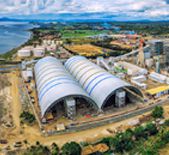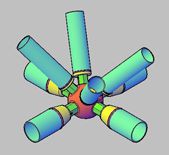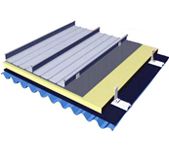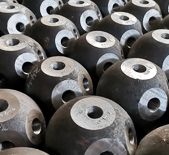The actual performance of steel truss structure in earthquakes is quite outstanding, as follows:
1.Good Ductility and Energy Consumption Capability: According to the seismic performance test study on the connection of Shanghai Center Building’s extension truss with giant columns and core, the experimental results show that all the specimens were damaged due to excessive plastic deformation of the web rods and inelastic local buckling as well as fracture of the lower chord, while the members connecting the extension arm to the main structure developed small plastic strains. The specimens exhibited complete hysteresis loops and good ductility, indicating that the designed extension arm truss and its connections were able to meet the seismic design requirements. In addition, about 70% of the energy dissipation in the form of accumulated axial force energy occurred in the diagonal web bar, making it the main energy dissipation member in the extended arm truss.

2.Self-Resetting Ability: In the study of seismic response of super high-rise structures with self-resetting telescopic trusses, it is mentioned that SCBRB web rods have small residual deformation under seismic action, and their self-resetting ability is significantly better than that of BRB web rods. Under the action of 8 degree rare earthquakes, the use of SCBRB web rods reduces the maximum postseismic residual displacement angle by 13%, while under the action of 8.5 degree rare earthquakes, the SCBRB web rods have a more significant effect on the control of the participating deformation, so that the maximum postseismic residual displacement angle is reduced by 24%.
3.Superior Seismic Performance: It is pointed out in the theoretical analysis and the seismic performance of prestressed steel-pipe concrete composite truss that part of the chord-filled concrete R-C prestressed steel-pipe concrete composite truss structure has the most excellent performance in seismic performance, which is more suitable to be used in the structure of large-span prestressed trestle bridge. Under the unidirectional seismic action in the transverse direction, both R-C prestressed steel pipe concrete truss and partially chord-filled concrete prestressed steel pipe concrete truss showed good structural performance and better applicability.

4.Seismic Susceptibility Analysis: The seismic susceptibility analysis of large-span spatial steel truss structure based on incremental dynamic analysis method shows that the probability of the structure reaching three limit states under the action of 8-degree three-level earthquake is small; the probability of the structure collapsing under the action of 8-degree rare earthquakes is only 0.93%, which has a higher load carrying capacity, but a lower ductility. This shows that the combination of incremental dynamic analysis method and seismic susceptibility analysis can effectively evaluate the seismic capacity of large-span spatial steel trussstructures.
In conclusion, the steel truss structure shows good seismic performance in earthquakes with high load carrying capacity and low collapse risk, which is a suitable building form for high intensity zones and large span structures.











 About Us
About Us 2025-04-18
2025-04-18


